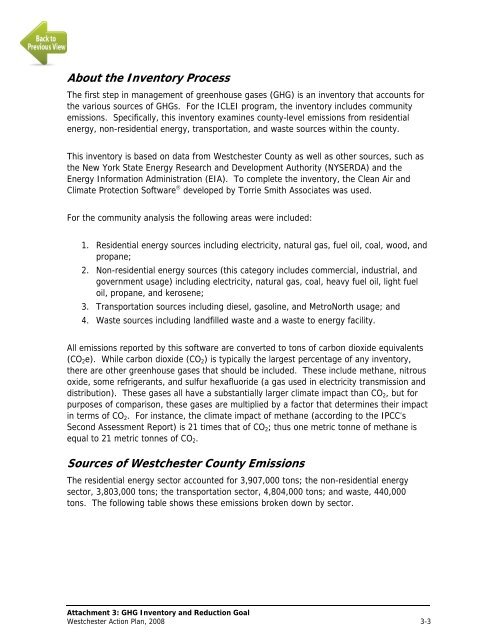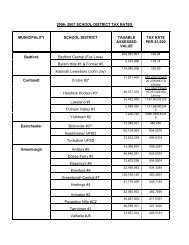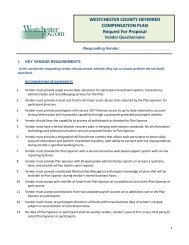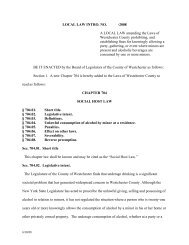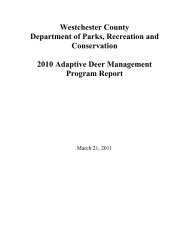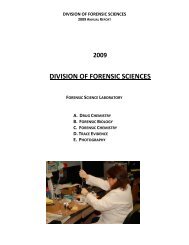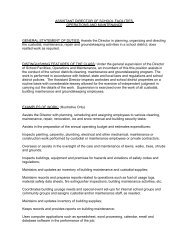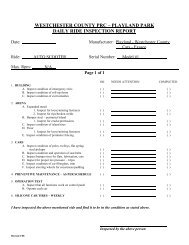Westchester Action Plan, 2008 - Westchester County Government
Westchester Action Plan, 2008 - Westchester County Government
Westchester Action Plan, 2008 - Westchester County Government
You also want an ePaper? Increase the reach of your titles
YUMPU automatically turns print PDFs into web optimized ePapers that Google loves.
About the Inventory Process<br />
The first step in management of greenhouse gases (GHG) is an inventory that accounts for<br />
the various sources of GHGs. For the ICLEI program, the inventory includes community<br />
emissions. Specifically, this inventory examines county-level emissions from residential<br />
energy, non-residential energy, transportation, and waste sources within the county.<br />
This inventory is based on data from <strong>Westchester</strong> <strong>County</strong> as well as other sources, such as<br />
the New York State Energy Research and Development Authority (NYSERDA) and the<br />
Energy Information Administration (EIA). To complete the inventory, the Clean Air and<br />
Climate Protection Software ® developed by Torrie Smith Associates was used.<br />
For the community analysis the following areas were included:<br />
1. Residential energy sources including electricity, natural gas, fuel oil, coal, wood, and<br />
propane;<br />
2. Non-residential energy sources (this category includes commercial, industrial, and<br />
government usage) including electricity, natural gas, coal, heavy fuel oil, light fuel<br />
oil, propane, and kerosene;<br />
3. Transportation sources including diesel, gasoline, and MetroNorth usage; and<br />
4. Waste sources including landfilled waste and a waste to energy facility.<br />
All emissions reported by this software are converted to tons of carbon dioxide equivalents<br />
(CO 2 e). While carbon dioxide (CO 2 ) is typically the largest percentage of any inventory,<br />
there are other greenhouse gases that should be included. These include methane, nitrous<br />
oxide, some refrigerants, and sulfur hexafluoride (a gas used in electricity transmission and<br />
distribution). These gases all have a substantially larger climate impact than CO 2 , but for<br />
purposes of comparison, these gases are multiplied by a factor that determines their impact<br />
in terms of CO 2 . For instance, the climate impact of methane (according to the IPCC’s<br />
Second Assessment Report) is 21 times that of CO 2 ; thus one metric tonne of methane is<br />
equal to 21 metric tonnes of CO 2 .<br />
Sources of <strong>Westchester</strong> <strong>County</strong> Emissions<br />
The residential energy sector accounted for 3,907,000 tons; the non-residential energy<br />
sector, 3,803,000 tons; the transportation sector, 4,804,000 tons; and waste, 440,000<br />
tons. The following table shows these emissions broken down by sector.<br />
Attachment 3: GHG Inventory and Reduction Goal<br />
<strong>Westchester</strong> <strong>Action</strong> <strong>Plan</strong>, <strong>2008</strong> 3-3


